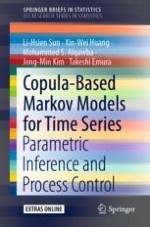2020 | OriginalPaper | Chapter
7. Copula Markov Models for Count Series with Excess Zeros
Authors : Li-Hsien Sun, Xin-Wei Huang, Mohammed S. Alqawba, Jong-Min Kim, Takeshi Emura
Published in: Copula-Based Markov Models for Time Series
Publisher: Springer Singapore
Activate our intelligent search to find suitable subject content or patents.
Select sections of text to find matching patents with Artificial Intelligence. powered by
Select sections of text to find additional relevant content using AI-assisted search. powered by
